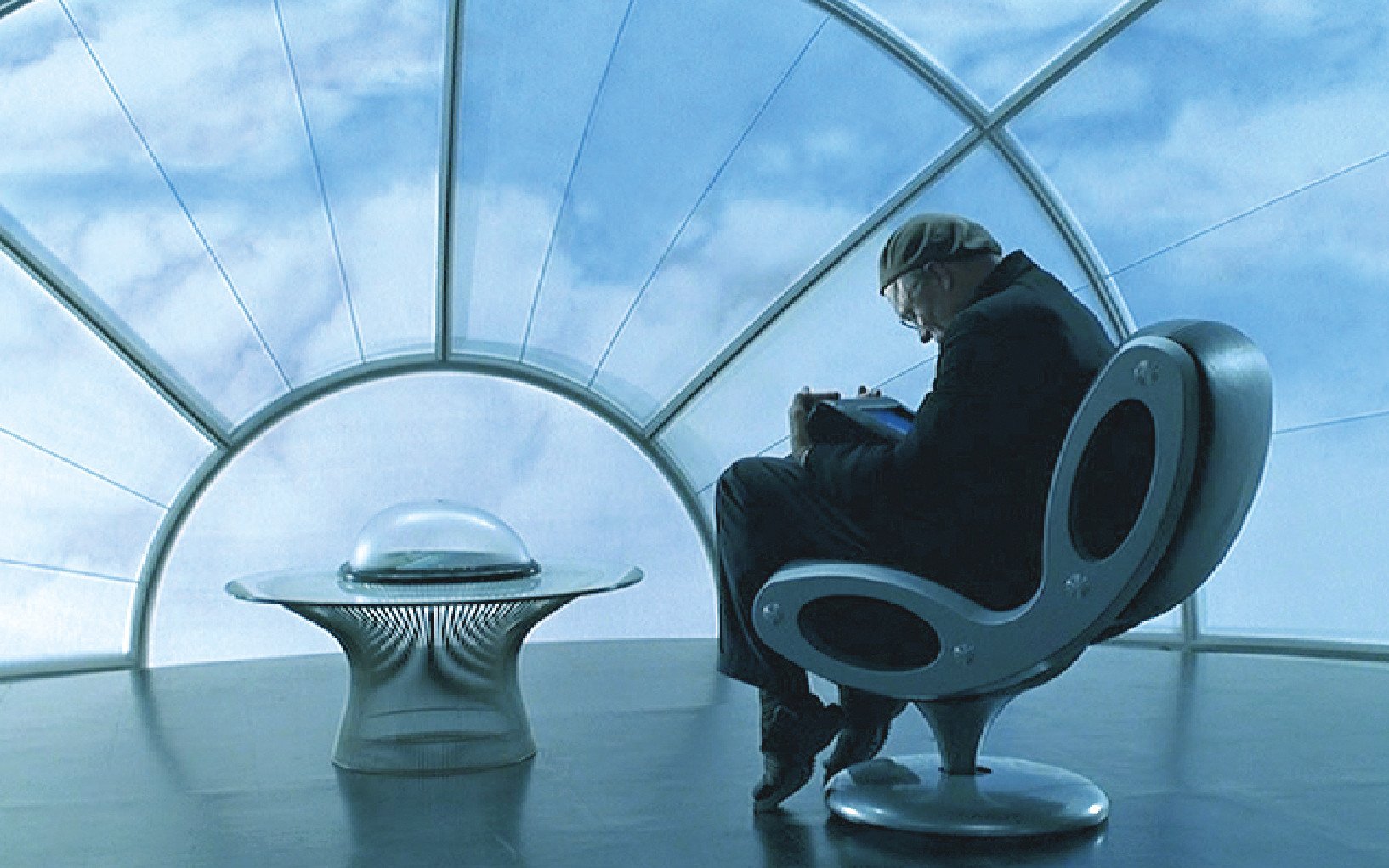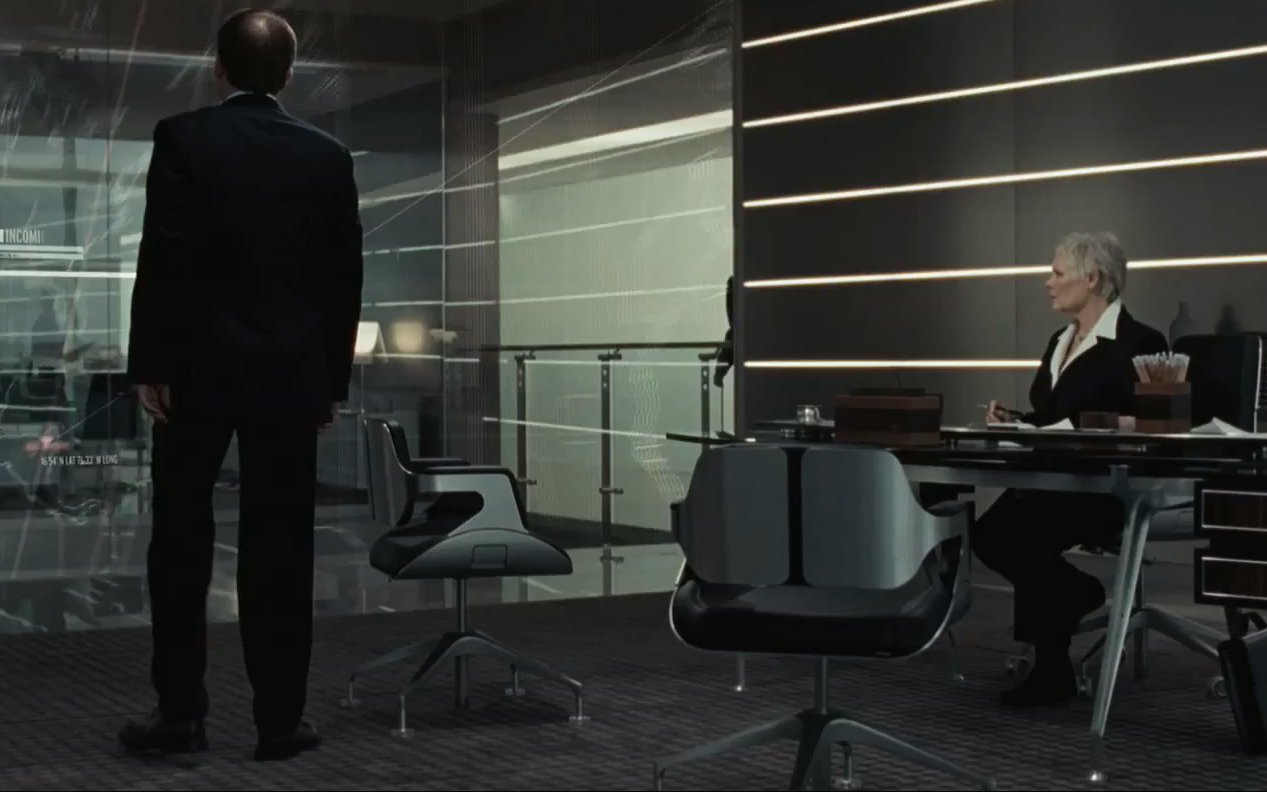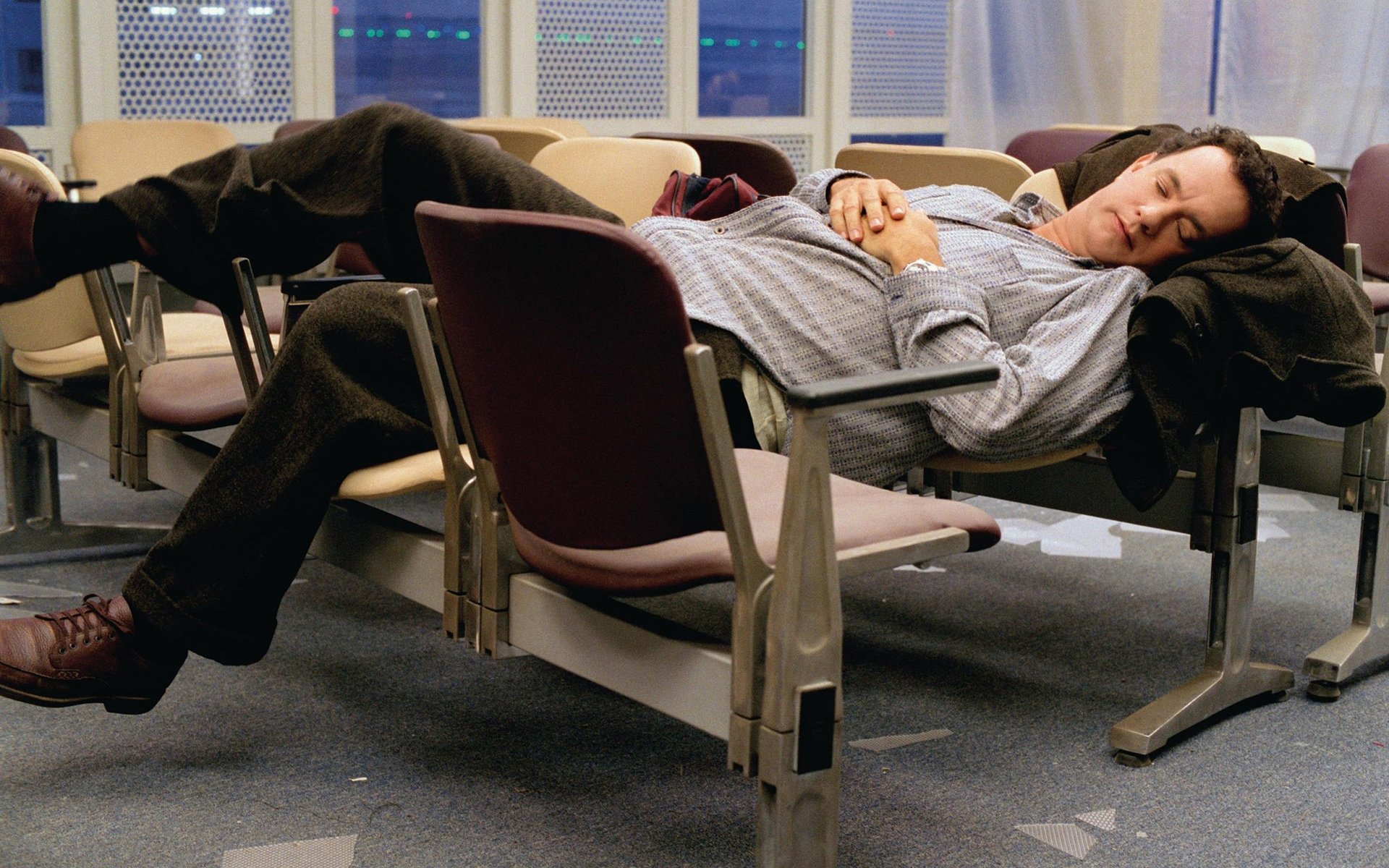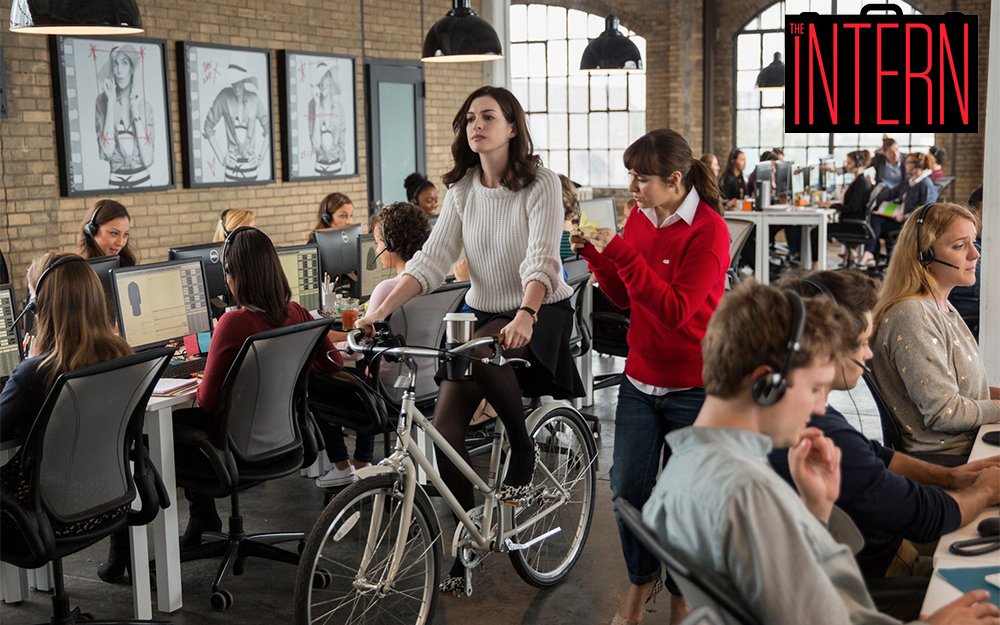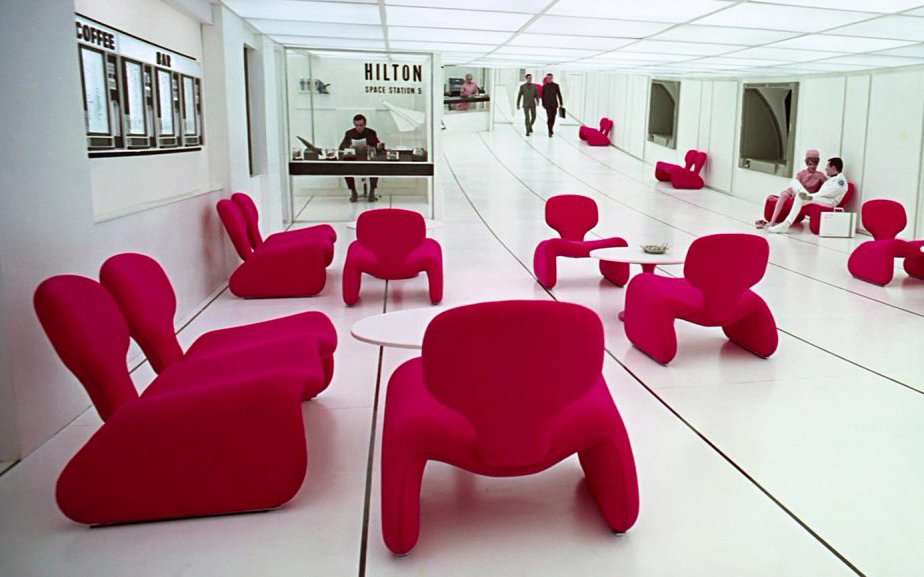Welcome to our latest series, an entertainment packed Night at the Oscars, where we scour through popular cinema and television to highlight the furniture that made it big. In this recurring feature, we will keep you updated on who’s doing well at the furniture design box office, as well as the stars that we spotted along the way.
Feature image: Moroso’s Gluon by Marc Newson in the 1988 film, The Truman Show
Stellar direction, appropriate music, and casting the right actors are some of the key components for creating a successful and entertaining film. But there’s another component that is equally important – picking the right furniture for a film set.
Filmmaking is an artform that demands an unprecedented level of coordination, passion, and detail from a large number of people involved. There’s a lot we can give credit to for a film’s success – the direction, screenwriting, acting, cinematography, and visual and sound effects, for starters. But if you ask us, the aspect that does not get enough attention is the set design. Specifically, the furniture. (We’re Love That Design, so you probably saw this coming!)
Interstuhl (above) proudly owning this James Bond set with its Robocop style Silver chair; Henrik Thor-Larsen’s retro-futuristic 1968 Ovalia Egg Chair (below) in Men In Black; Michael Jackson’s Scream video featured Moroso’s Soft Big Easy designed by Ron Arad, and Jude Law sitting on Moroso’s Big Soft Easy in Don Hemingway (bottom)
In the considerable world of A&D, interior design and set decoration share a common ground that sees creative forces from both domains come into play. Both are concerned with the look and feel of an interior and reflect the character and tastes of its inhabitants. But there are also fundamental differences. Interior design is concerned with the aesthetic, functional, and social aspects of a built environment, focusing on improving the experience of a space. Interior design today has to consider elements, such as sustainability and wellbeing, on top of other factors that are expected, such as ergonomics and visuals. On the other hand, set design is focused purely on delivering the right cinematic experience to consumers on the other side of the screen. Cinematic interiors give context and mood, and can set the psychological perception on screen.
That’s why furniture is so critical to bringing the cinematic genius of a movie’s creators to life. Iconic furniture has often found its way into notable moments of cinema history. Some of the most memorable movie scenes and posters would not have been possible without them. Fans of the Men in Black series will immediately recall the poster from 2002 with Agent K and J sitting on Henrik Thor-Larsen’s retro-futuristic, 1968 Ovalia Egg Chair.
Haworth Zody chairs in House of Lies and with Halle Barry in The Call (above); Tom Hanks passed out on a Frezza (below) in The Terminal
Furniture gives form and atmosphere to a script and allows a director’s vision of a film to take shape. Nearly every piece of furniture has a unique personality and charisma about it, akin to the personality of a fictional character. Set designers work with the rest of a film’s creative teams to match the mood and vibe of a movie or scene with the right type of furniture. Getting the furniture right can do wonders in helping convey the emotion of a scene and gain further insight into the theme of a script.
Let’s take a look at the Barcelona chair, a furniture design ‘hall of famer’. It should receive an award simply for its numerous appearances in movies. Designed by Ludwig Mies van der Rohe, the instantly recognisable chair is known for its suave aesthetic and elegance. Epitomising its creator’s less is more philosophy, the Barcelona chair is designed to be placed in areas defined by luxury and class. Keeping that mind, it’s no surprise that it can be spotted in scenes from movies, such as Casino Royale (and other James Bond films), Tron Legacy, and American Psycho, all movies involving themes of class and style. In the last example, the chairs truly reflect Patrick Bateman’s personality – stylish, wealthy, organised, and detail-oriented.
Knoll’s Barcelona Chair designed by Mies Van der Rohe (above) in Christian Bale’s apartment in American Psycho; Humanscale’s Zody in The Intern (below) and with Angelina Jolie seated in the movie Mr and Mrs Smith (bottom right)
The Djinn Chair by Olivier Mourgue makes a great case for furniture being used to portray the theme of a setting. Sporting a funky, attention grabbing design, it was quite well placed in 2001: A Space Odyssey, where sci-fi and futurism were the prevalent themes. The chair’s ultramodern design clearly made an impact on viewers, and pop culture as a whole, and has become a valuable collectors item.
Other regular stars include the Aeron and Eames chairs, seen in numerous scenes filmed in meeting room setups. An ideal example of traditional corporate design, you can easily spot these chairs in a movie or popular TV series. Watch nearly any episode of Suits or Mad Men, and you’ll see your favorite characters sitting on them. If they’ve been signed off by Don Draper and Harvey Spector, that’s a ‘thumbs up’ for us.
The Djinn Chair by Olivier Mourgue (above) in 2001: A Space Odyssey; Herman Miller’s Aeron and Eames chairs have been silver screen and television superstars for decades. See Frasier (below left) and Joey from F.R.I.E.N.D.S. (below right) in the Eames before the apartment got robbed! And of course Robert Downey Junior seated on the ever popular Aeron in the Avengers (below centre)
In some cases, we associate furniture closely with a character. In the iconic red vs blue pill scene from the first Matrix movie, we first spotted the now famous, red leather, wingback chair in a Chesterfield design. The chair itself is grand in appearance and throws a strong alpha vibe, which is perhaps why it was so well suited to the scene. Interestingly, its Chesterfield design strongly contradicts the general design of the matrix universe, nevertheless suits the character Morpheus’s personality exceptionally well. It has developed a cult-like following since then, and is often featured in contemporary luxury settings with the chair as a singular piece that stands out.
Perhaps the most noticeable of all is the Eames Lounge chair, designed by Ray and Charles Eames. Of all the scenes, the most prominent one that comes to mind is the popular sitcom Frasier. Being a universally recognised symbol of sophistication and style (the chair not Frasier), it seems totally befitting for a Harvard-educated therapist living an upscale lifestyle in a popular metropolitan city. If you fancy a trip down the history aisle, Andreu World’s book, Chairpedia, has a section dedicated to seating that made it to Hollywood, on screen and off. Check it out here.
So, the next time you decide on furniture for your home or office, remember, you may be buying a design that appeared in an award-winning film or show.
Clockwise from top left: Interstuhl’s Silver chair in Ocean’s 13; Andreu World’s book, Chairpedia; Nowy Styl’s Tapa in Sorrentino’s film Loro; The famous Matrix red Chesterfield sofa

